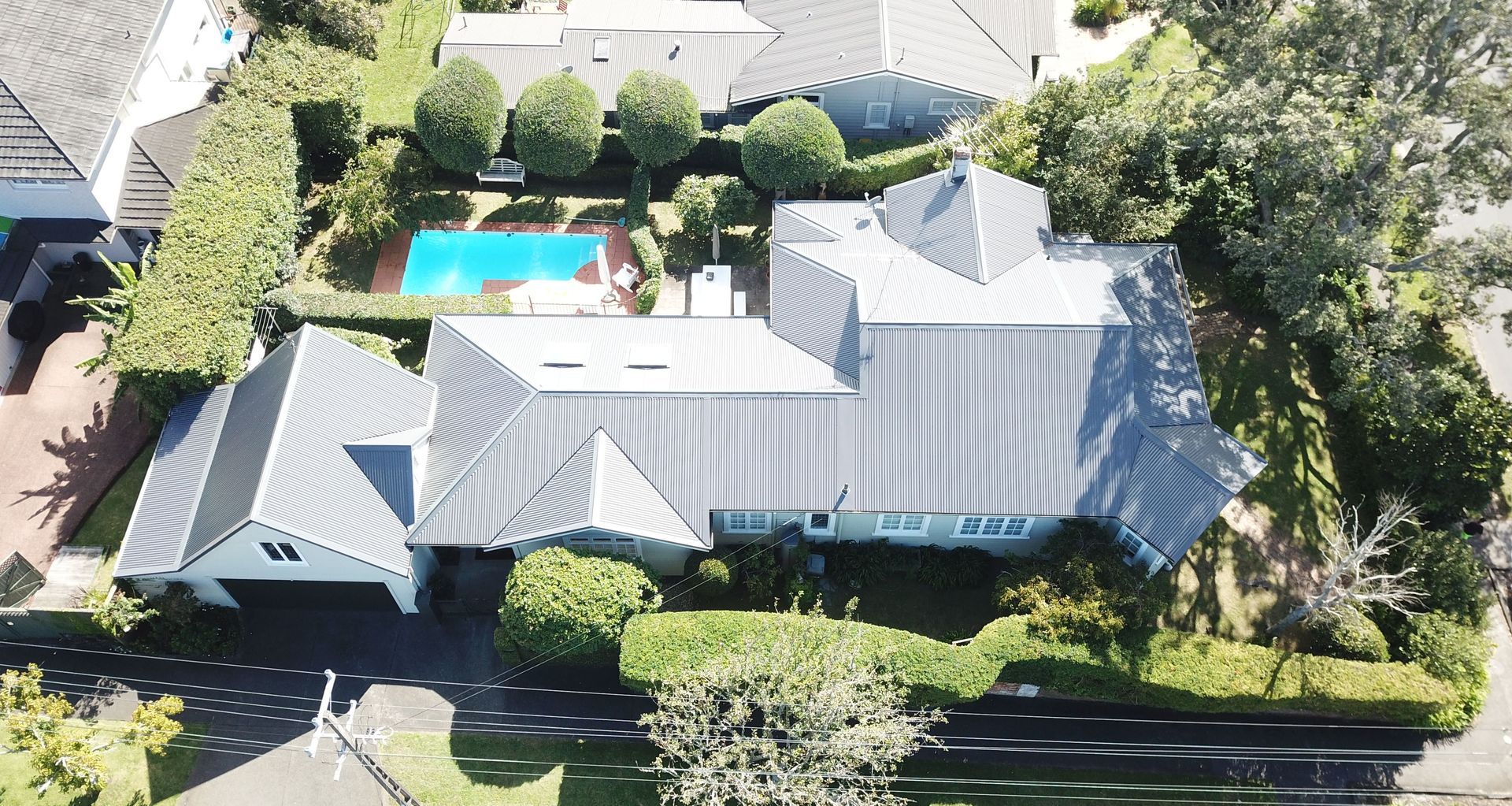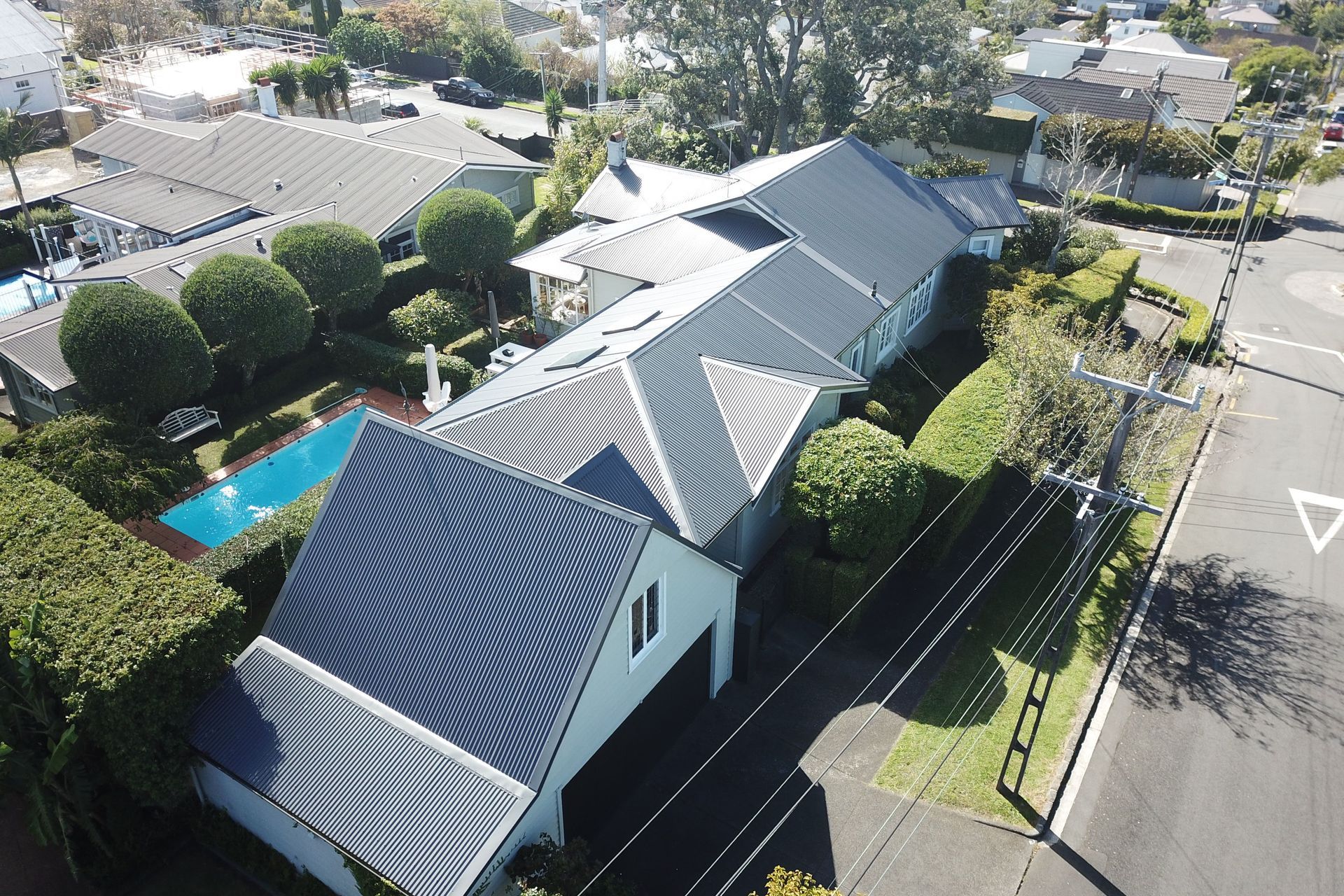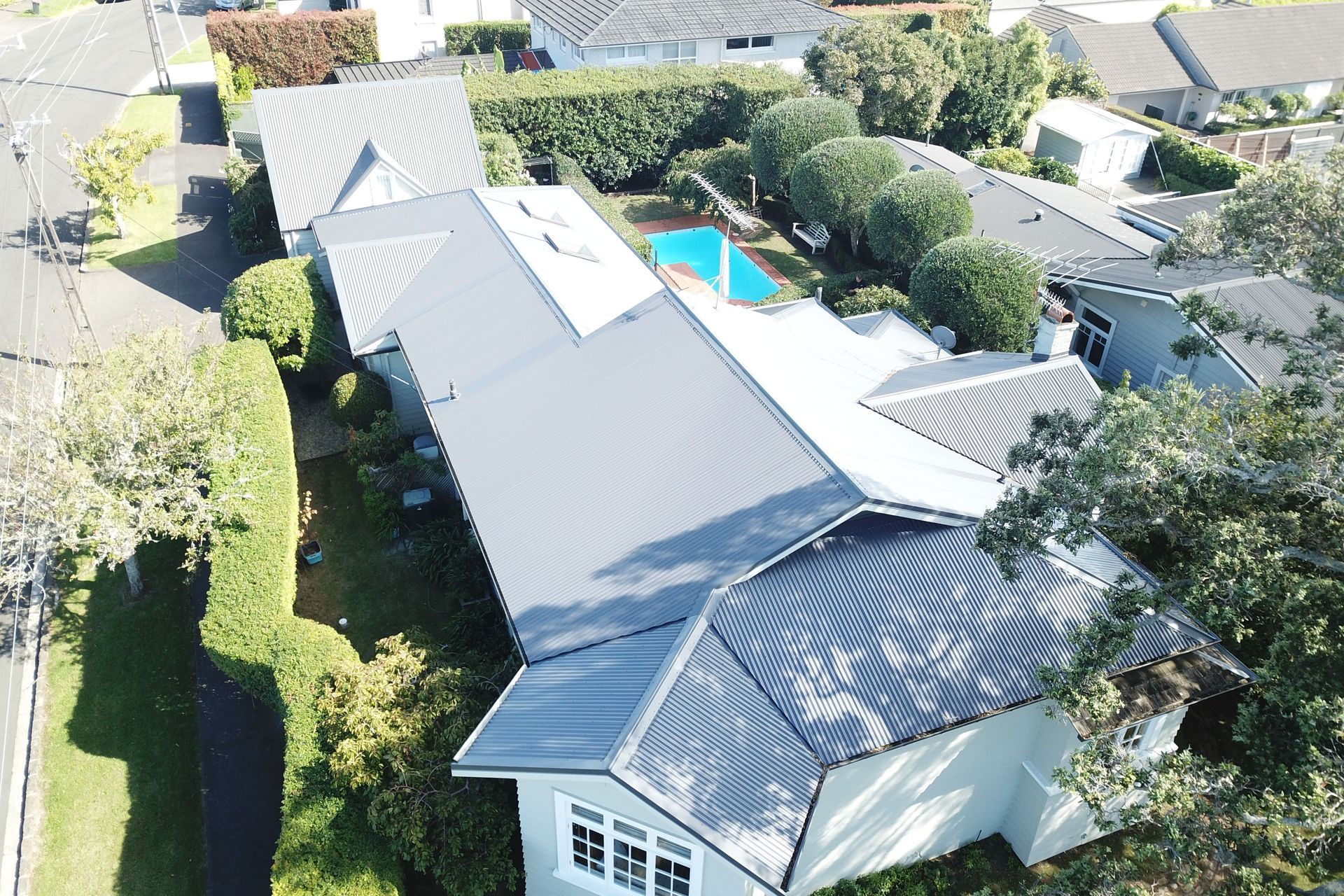How it works: a roofing expert talks us through a Remuera re-roof project
Written by
29 May 2023
•
3 min read

“The common misconception with re-roofing is people think we take the whole roof off, and then put the new one on.” Marc Kitching, sales and marketing director at Roof Auckland, is talking about a re-roofing project in the Auckland suburb of Remuera.
“When it’s a roof like this, where you’re taking metal off and putting new metal on, we usually start at one end and work our way across, only taking off the amount of sheets we can replace each day.” This ensures the home stays watertight for the duration of the roof replacement — even if it rains for a few days and the install is put on hold.
Kitching and the Roof Auckland team are experts when it comes to roofing, and the Remuera re-roof project is proof. The old roof had been leaking into multiple rooms, causing internal water damage, when the team was engaged.

Before removing any sheets from the roof, the team needed to take key measurements — including roof pitch and total square metrage of the roof. This process usually includes a site visit to take photos and initial measurements, and then the roof is drawn up in modelling software.
Scaffolding is put up before the new roof arrives, and then the old roof is removed in sections. As mentioned earlier, the roofers only remove as many sheets as they can replace in a day. “We start at one end and go to the other. Then, once the roof is finished, the final flashings are ordered. “ Because we don’t know where the ribs are going to end before the roof is installed, we have to lay it and then draw up the final flashings,” Kitching explains.
“To keep things watertight during the installation, we reuse the old flashings, so if it rains and work has to stop, there won’t be any leaks.”


The Remuera project took roughly three weeks to complete, with a patch of bad weather mid-way through which, Kitching notes, is typical when working in Auckland. And, while it was a fairly straightforward job, there was one aspect of particular complexity.
“There’s an internal gutter where the roof meets the garage, so that was a bit fiddly, because we had to take the house wall cladding off to get to the metal flashing underneath.
“We also put a TPO membrane over the top of the gutter so all the joins would be sealed, and the gutter wouldn’t leak.”
For the client, the project was as simple as contacting the Roof Auckland team. As a full service roofing company, all subcontractors — from scaffolders to skylight installers — are managed by the team. “With re-roofing jobs, we’re able to run the whole thing, which ensures a quick turnaround and a quality result,” Kitching says.
“If you’re doing a renovation project, re-doing the roof should be your first priority, because once it’s watertight you can go ahead and update the inside and you don’t need to worry about leaks. Re-roofing is a significant investment, but it is worth it because it adds value to the house.”
Learn more about Roof Auckland.